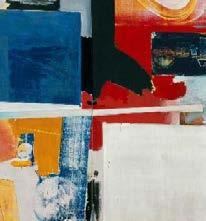
1 minute read
Mapping the Postmodern Andreas Huyssen 1986
What were the connotations of the term postmodernism in the 1960s? Roughly since the mid-195os literature and the arts witnessed a rebellion of a new generation of artists such as Rauschenberg and Jasper Johns, Kerouac, Ginsberg and the Beats, Burroughs and Barthelme against the dominance of abstract expressionism, serial music, and classical literary modernism. The rebellion of the artists was soon joined by critics such as Susan Sontag, Leslie Fiedler, and Ihab Hassan who all vigorously though in very different ways and to a different degree, argued for the postmodern. […] By the 1960s artists and critics alike shared a sense of a fundamentally new situation. The assumed postmodern rupture with the past was felt as a loss: art and literature’s claims to truth and human value seemed exhausted, the belief in the constitutive power of the modern imagination just another delusion. Or it was felt as a breakthrough toward an ultimate liberation of instinct and consciousness, into the global village of McLuhanacy, the new Eden of polymorphous perversity, Paradise Now, as the Living Theater proclaimed it on stage.
Advertisement
By the mid-1970s, certain basic assumptions of the preceding decade had either vanished or been transformed. The sense of a “futurist revolt” (Fiedler) was gone. The iconoclast gestures of the pop, rock, and sex avantgardes seemed exhausted since their increasingly commercialized circulation had deprived them of their avantgardist status. The earlier optimism about technology, media and popular culture had given way to more sober and critical assessments […] It was easy to see that the 1960s were over. But it is more difficult to describe the emerging cultural scene which seemed much more amorphous and scattered than that of the 1960s […]
In political terms, the erosion of the triple dogma modernism/ modernity/avantgardism can be contextually related to the emergence of the problematic of “otherness,” which has asserted itself in the sociopolitical sphere as much as in the cultural sphere. I cannot discuss here the various and multiple forms of otherness as they emerge from differences in subjectivity, gender and sexuality, race and class, temporal Ungleichzeitigkeiten and spatial geographic locations and dislocations.
Robert Rauschenberg. Axle, USA, 1964







